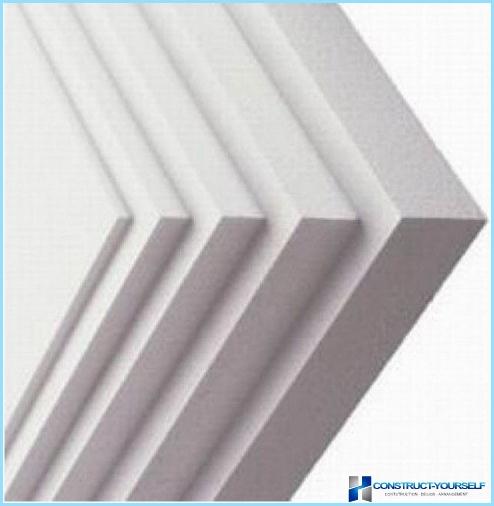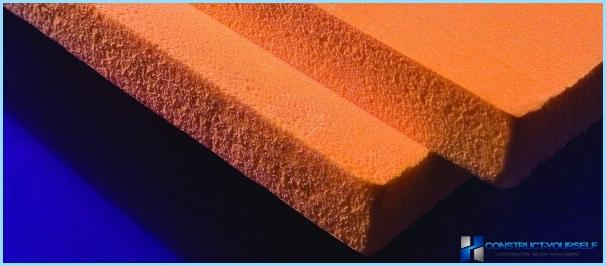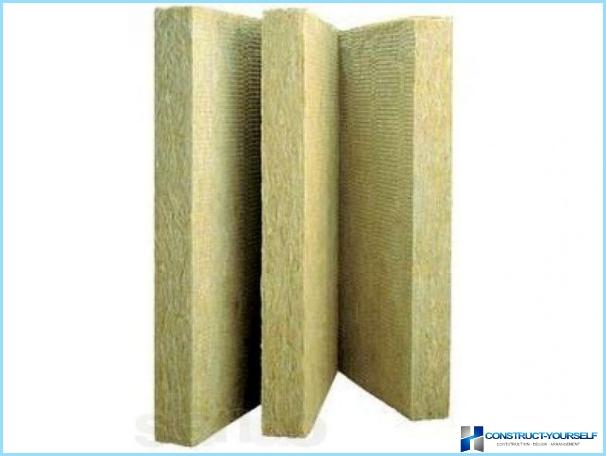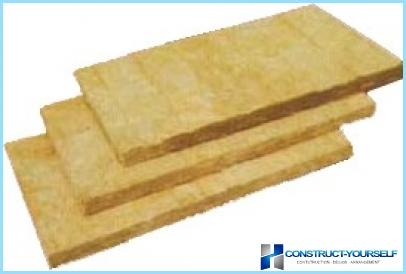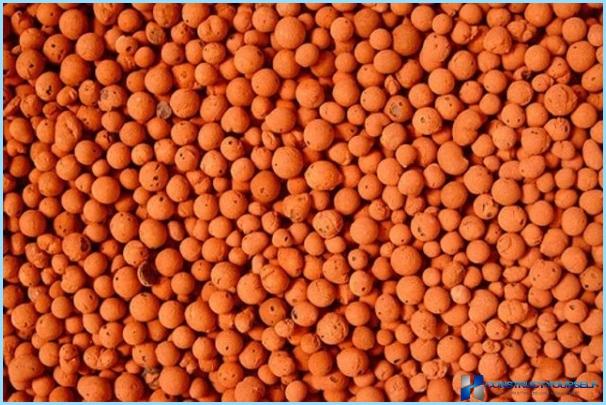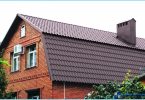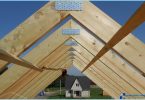The contents
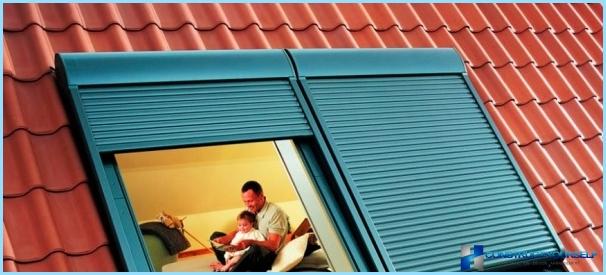
One of the most important, difficult and critical moments in the construction of the home is the insulation of its roof. The thermal insulation has an impact on the creation of a microclimate in premises, fire safety, can function as insulation, and also helps to protect from rodents and fungi. Consider the most important points when building roof insulation.
Selection of material for insulation ↑
Choose the material for the thermal insulation of the roof must be very careful. Because low quality and improper installation can lead to premature deterioration and unnecessary expense of time and money to restore. Materials of thermal insulation available on the market, can not only perform the function of maintaining the temperature, but also serve as sound insulation, possess water repellent and fire resistant properties.

General aspects of the choice of insulation is written in the construction norms and rules (SNiP):
- The thermal conductivity of the insulator. Important characteristic of insulation is its thermal conductivity, the smaller, the better. Currently available insulators, the conductivity of which varies between 0,029–0.23 W/(m°C). Often the standard thermal conductivity taking the thermal conductivity of the foam, which is 0.03 (W/m*K). The level of conductivity depends on the amount of air consisting of a heater, its density, temperature.
- The density of the material. A material having a low density contains a greater amount of air, therefore has a lower thermal conductivity.
- Compressive strength. This criterion makes it clear what is the maximum load can handle this material.
- Water vapor permeability is the ability to pass water vapor. Material with high water vapor permeability creates a so-called breathable insulation as it allows moisture contained in the air to pass freely through the insulation, and low moisture absorption allows it to accumulate in the material. Thus, the building will be provided with the optimum level of humidity. Attention! Producing insulation of any surface, remember that the level of water vapor should rise from the warm side to the cold.
- Breathability. This criterion should be minimal, because the lower the permeability, the more efficient the insulation.
- The fire resistance. Of course, when you select should give preference to non-combustible materials that will ensure safety during fire outbreak. Such materials are marked as NG (non-combustible).
In the modern market are in high demand these types of heaters such as:
- A slab of foam. This kind of insulation is quite popular in the construction market. Its popularity is due to the following characteristics: wide range, relatively low cost, light weight, ease of installation, standard conductivity, low water absorption.
- Extruded polystyrene. It is used in industrial and civil construction. It has a homogeneous structure, which leads to low conductivity and excellent resistance to water vapor. The advantage of this insulator is high compressive strength, which can withstand heavy loads. This environmentally friendly insulation is a little rot.
- Basalt insulation. This species has high thermal insulation and fire resistance. It can also be used to provide sound insulation.
- Glass wool. It can be used in buildings of any shape and configuration, thanks to its soft structure. Low density of the insulation provides a significant reduction of structural loads.
- Expanded clay. This kind of insulation has a natural basis. Its main advantages are strength and durability.
Insulation thickness ↑
The thickness of the insulator is calculated based on the sanitary norms and rules No. 23-02-2003 «Thermal protection of buildings» and depends on the location of the object. For example, in Vologda, Krasnodar, Volgograd, Moscow, Kaliningrad, St.-Petersburg, the thickness of the layer of heat insulation made of basalt should be 20 cm, Omsk, Izhevsk, Novosibirsk, Irkutsk – 25 cm, Chita, Anadyr, Vorkuta – 30 cm, and in Yakutsk – 35 cm the above data is generated, given the multiplicity of tiles of the insulator, which can have a thickness equal to fifty or one hundred millimeters. Basalt insulation has a thermal conductivity almost the same as the thermal conductivity of mineral wool based on glass fiber and polystyrene, because these figures can be applied to these types of heaters.
The calculation of the required amount of material and the peculiarities of installation of thermal insulation of the roof ↑
For the installation of roof insulation you will need the following tools and materials:
- construction knife;
- roulette;
- a wooden block (for smooth and safe cutting plates if necessary).
To correctly calculate the amount of necessary insulation and make a quality installation, you need to consider certain characteristics of this type of work.

The insulation should be laid between the rafters in the spacers so that it had a width greater than the distance between the adjacent rafters on 10-15 mm. If the dimensions of one tile insulation this is not sufficient, from the other cut out detail such size that it was possible to put spacers in between the already-laid tiles, insulation and rafters of the roof.
Name of the material for the insulation is determined in advance, as in this case will be known for its size, which will help to avoid unnecessary waste. Considering the distance between the adjacent rafters and their length, it is possible to make basic calculations and figure out the amount of insulation that will be used on one flight.
Example of calculation of insulation ↑
Calculate amount of insulation, which will be needed under the following conditions:
- the roof slope has a length of 4m and its width is 6,55 m;
- the interval between two adjacent rafters is 0.6 m (standard);
- the truss leg has a standard cross section of 50*150mm;
- a total of ten spans;
- dimensions of one plate of insulation are 117х61х10 cm (pack of ten tiles);
- you need to create a thermal insulation thickness of 20 cm.
Under these conditions it turns out that one flight to spend 4/1,17=3,41 plate, and one of them will cut off a piece of 1.17*4-4=of 0.68 m. the resulting segment will be useful when creating a second layer, because the thickness of heat insulation one hundred millimeters, and on the conditions required to create a thermal insulation is 20 cm as a result, it remains a short segment having a length 0,68-(4-1,17*3)=0,19 M. Thus, the insulation of one span will have to use 7 tiles. Spans just ten, so in total will be used seventy-seven plates or packs. If the roof has two slopes, respectively, the number of insulation boards doubles 70*2=140 plates, which is fourteen packages. In this case we have with each span remains cut 0,19 m, i.e. a total of 14 pieces.
Purchase insulation with a better margin. By performing the above calculation, we found that fourteen of the packages remains small, the length of which will be 19*14=266 see In terms of area is almost two full plates. Such reserve will be sufficient, but for greater reliability is possible to purchase an extra package of insulation.
The specificity of the insulation of flat and pitched roofs ↑
Before you start a job for thermal insulation of any type of roof you need to inspect a roof, eliminate the problem, mold. Apply antiseptics, which prevent the emergence and spread of fungi. Also need to troubleshoot the wiring, plumbing and other utilities.
You can then proceed directly to the thermal insulation works. The first step is to create a waterproofing between the rafters and roof. The material used as the membrane, should cover the truss legs. To secure using a stapler. Laying insulation starting from the bottom of the slope. Sheets of insulation are fixed using strips, which are Packed perpendicular to the rafters. In the insulating layer are installing a vapor barrier, for example, the construction of the membrane film with perforation. It is attached to the rafters.
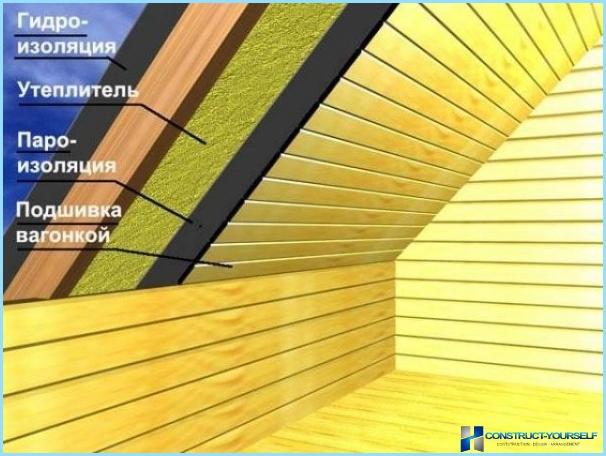
Technology insulation flat roof differs from a pitched. Structure of thermal insulation of the flat roof as follows: vapor barrier, insulation, coil coating, and then the bulk material. Flat roofs can be insulated both outside and inside. To avoid double work, builders recommend to make thermal insulation of the roof first, outside, wait for winter and if that is not enough, it is possible to make insulation inside. But usually the exterior insulation is enough.
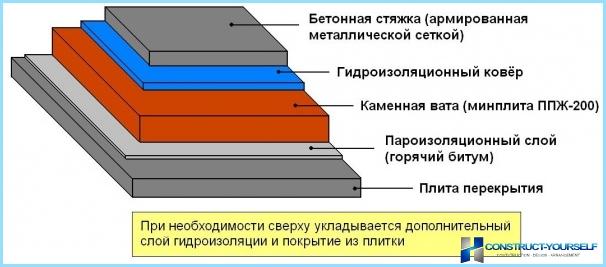
Tips on arrangement of insulation you can learn by watching the following video:
Properly selected material for thermal insulation, as well as qualitative work – is the key to comfortable conditions in your home. Successful construction!

